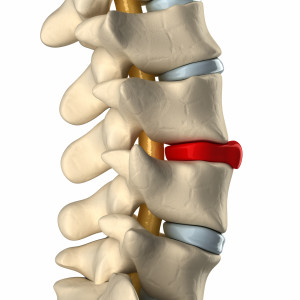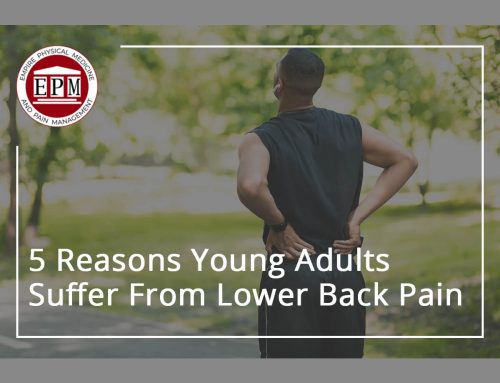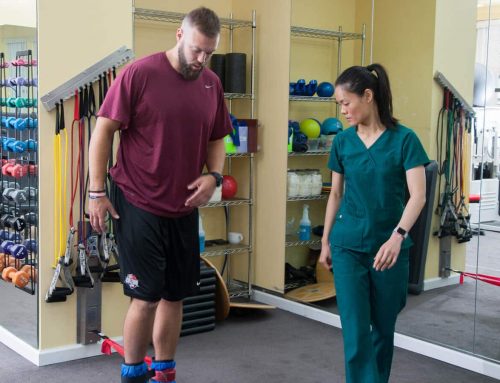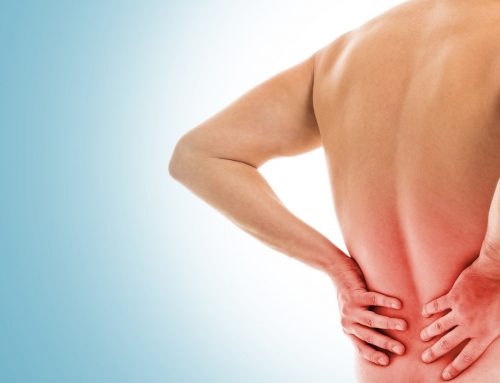
Have you been tested to find out you have a herniated disc? You deserve the best doctor in NYC!
WHAT’S THE STORY?
New York City is truly the city that never sleeps!
It has energy that no other city can compare to and many of us are constantly on the go because of its fast-paced nature, feeding into the hustle and bustle that New York is known for.
STATISTICS?
About 8.6 million Americans call NYC their home and about 3.9 million of them work in the New York City region. Of those, many of its workers are sedentary. If you’re reading this, it’s likely that you are a part of that statistic.
WHY DOES THIS MATTER?
Whether you work in the office and sit at a desk all day or are transporting New Yorkers as a cab driver or MTA employee, we all share the same aches and pains from being stationary for too long.
SUFFERING WITH PAIN?
Many New Yorkers suffer from back pain, some of which stem from herniated, slipped or bulging discs. Anyone can be afflicted by these conditions, and it is likely that you or someone you know will be affected at some point in your life.
WHAT IS A HERNIATED DISC?
Did you know that your spine has 33 vertebrae? Between each of your vertebrae, you will find rubbery pads, called discs. As you age, your discs can become more fragile, making herniated discs a relatively common condition. Herniation can occur anywhere along the spine, although it is most common in the neck or lower back. You disc can herniate and you won’t even and know it. If the disc is not hitting a nerve, you may not feel any pain at all. If it is, however, this herniation can cause a great deal of pain. For the majority, 90% of people suffering from this condition will be able to treat it without the means of surgery.
MORE DETAILS…
The inside of these discs are jelly-like and their function is to minimize the force and impact placed on your spine when you move. With age or injury, the inside of the disc can bulge and rupture through its structure and can affect or irritate a nearby nerve. When this occurs, it is called a herniated disc.
BUT HOW DOES IT OCCUR?
Herniated discs are much more common than you think and can happen to anyone. They can be the results of bad posture or after sudden trauma or injury, such as a car accident. Your spine is cushioned by sponge-like discs that act as shock absorbers; these discs are comprised of a gel-like nucleus with a hard cartilage exterior. Herniation occurs when this gel-like center migrates through its outer ring. Pressure is then placed on the surrounding discs, triggering inflammation and pain. A herniated disc can happen anywhere along your spine, although it is more typical in the neck and lower back.
They can be age-related – as you get older, your discs wear down and naturally lose their water content and the disc’s inner core can push through.
WHAT’S MOSTLY AFFECTED?
Most commonly, people suffer herniated discs in the L4 or L5, found in the lower spine, as it absorbs the most weight and impact.
HOW DO YOU KNOW IF YOU HAVE ONE? WHAT ARE THE SYMPTOMS?
In some cases, depending on the location of the herniation, you may have no symptoms. Pain can be localized to the area of where the bulging disc is and symptoms can vary depending on its location.
For example, if the herniation is in the lower spine, you may experience a shooting pain down the leg, resulting from pressure on the sciatic nerve. If it is in the neck, you may experience shooting pain down your arm. Tingling, numbness or weakness in the limbs could also be a sign. When you’re younger, your discs are comprised of a higher water content- almost 80%. As you age, they begin to lose their water retention and dry out. This can cause normal wear and tear, making the discs more prone to injury.
Those affected may have pain that lasts a couple of days and then extend to other parts of the body, depending on where the affected disc is. If your disc is hitting a nerve in your cervical spine, the subsequent pain would be in your shoulder, arm, or neck. If the condition is in your lumbar spine, then your pain may be in your legs, buttock, or back. The pain may get worse with prolonged sitting; you may prefer to stand. It may also act up first thing in the morning or get worse with bending or reaching. You may experience severe muscle pain and weaker muscles.
If you feel any numbness, tingling, or weakness in your legs, lower back, or buttons, seek medical attention – you may be suffering from sciatica.
WHAT PUTS YOU AT RISK?
While a herniated disc may occur after a prominent injury, this condition typically stems from normal wear and tear. Other factors include the following:
Age – With aging comes excessive wear and tear- herniated discs generally occur in people between the ages of 30 and 50 years old. Generally, after the age of 50, herniated discs are less common; this is due to the fact that by that age, there is less fluid to push out of the disc.
Smoking – One of the negative effects of smoking is that less oxygen is supplied to the discs; this makes the discs more susceptible to degeneration.
Weight – Being overweight can add stress to your discs, especially in the lower back.
Repetitive motions – Constant bending, twisting, lifting, or turning can contribute to wear and tear.
HOW IS IT DIAGNOSED?
A review of your symptoms and your past medical history can lead to the proper diagnosis.
HERE’S THE DEAL
Where is the pain occurring? Is it more of an ache or is it sharp and piercing? Do you have a family history of back problems? Does it hurt more when you do any specific movement or activities?
A physiatrist, which is a medical doctor specializing in conditions affecting the muscles, ligaments, nerves, tendons and bones, can help you treat your herniated disc.
HOW TO TREAT IT?
There are several non-surgical and non-invasive treatment options for those suffering from a herniated disc. A good NYC specialist will be able to outline the best plan for you, which may consist of a combination of modalities to provide pain relief, including the following:
Physical therapy – stretching and strengthening exercises can be very effective, especially the earlier that you detect the problem, the sooner you willing heal and return to your normal activities.
Specialists with advance do training can work with you and teach you exercises to strengthen the muscles, minimize pain and reduce the pressure on the spine.
Heat Therapy – especially useful in the first 48 hours, heat therapy can relieve muscle spasms and ease inflammation.
Cold Therapy – recommended at your first onset of pain, applying ice will help ease inflammation in the first 48 hours.
Over-the-counter pain medication – Motrin and Advil can reduce inflammation and ease mild to moderate pain.
Therapeutic / Medical / Deep Tissue Massage – as a part of physical therapy, manipulation and massage can ease the tense muscles.
If the pain is very severe, bed rest is recommended but for no longer than two days. Too much rest can lead to weakened muscles and stiff joints which can reduce your recovery time.
After the two days, make sure you are up and lightly active, even if it is just a short walk. Remaining sedentary for too long will cause more harm than good.
If you have been dealing with a herniated disc for an extended period of time, your treatment plan may become less conservative.
Steroid injection – To reduce inflammation, steroids may be injected into the affected area. It may be used in conjunction with other non-surgical care.
Spinal Decompression Therapy system is a machine which uses traction to gently stretch the spine, alleviating the pressure off the spine while allowing healing nutrients in.
The traction therapy creates a negative pressure within the disc which pulls the material back in and creates for a more effective healing environment.
A typical session lasts about 30 to 45 minutes. Sessions are relaxing and comfortable – some patients even fall asleep during their treatment. With spinal decompression therapy there is no downtime, so you can book a session before, during, or after work and get back to your day easily. It is a low-risk treatment and there are virtually no side effects, although some may experience muscle spasms for a short period of time. Clinical testing shows an 86% success rate in treating herniated, compressed, bulging and degenerative discs. Results can be felt in as little as a few sessions but is best seen after at least six weeks.
We use the DRX-9000 system in our office and are one of only a few practices in the city with this state-of-the-art equipment. If you’re a good candidate for it, spinal decompression therapy can help those that haven’t seen results with conservative measures.
HOW CAN WE HELP?
Our office specializes in physical medicine and rehabilitation and is overseen by our medical director, Dr. Steven S. Moalemi. After a consultation with our medical doctor, we can diagnose and treat your neck and back pain without the use of surgery. We will provide you with a comprehensive treatment plan to reveal a brand new you. Our team of experts and specialists will work together and guide you every step of the way to help you increase your mobility and live and maintain a pain-free life.
We accept most insurance plans and offer extended hours at our two convenient locations.
If you’ve been suffering from herniated discs and have tried several different treatment plans with no results, the DRX-9000 system could be for you. Give our office a call at (646) 665-7109 to see if it’s right fit for you today!
_________________________________________
Make sure to fill out a short form or just call the office today!
Published By:
Empire Physical Medicine & Pain Management
7 W 45th St floor 9,
New York, NY 10036
Phone: (646) 665-7109
Website: https://manhattanpainrelief.com





